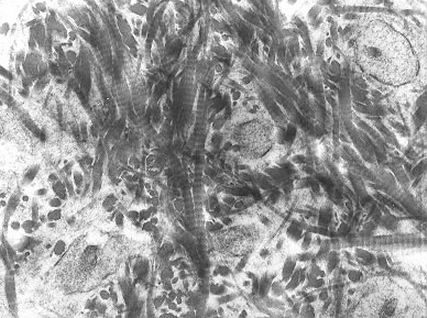Collagen
Online Biology Dictionary
|
|

|
| Collagen fibrils in bone matrix |
Collagen (pronounced: "KŌ-lə-jen") is the most abundant protein in the human body. It's a long, fibrous structural protein that supports tissues and gives structure to individual cells. Collagen is an important component, too, of the matrix interconnecting cells. Collagen fibers are tough and, typically, bundled. They provide tensile strength to the tissues containing them. Collagen is also found inside certain cells. It is a primary constituent of cartilage, ligaments, fascia, bone, and skin.
Bone forms as osteoblasts secrete minerals that encase collagen fibrils (see picture at left). Bone is the tough substance that it is because the minerals (primarily calcium phosphate) provide compressive strength, while the collagen provides tensile strength that resists stretching.
Collagen can be visualized in microscopy by means of the acid stain eosin, which acts as a fluorescent red dye.
Collagen in detail:
Most shared on Macroevolution.net:
Human Origins: Are we hybrids?
On the Origins of New Forms of Life
Mammalian Hybrids
Cat-rabbit Hybrids: Fact or fiction?
Famous Biologists
Dog-cow Hybrids
Georges Cuvier: A Biography
Prothero: A Rebuttal
Branches of Biology
Dog-fox Hybrids